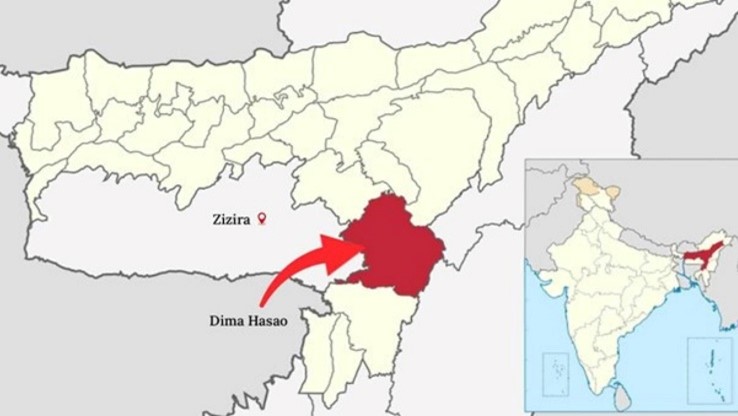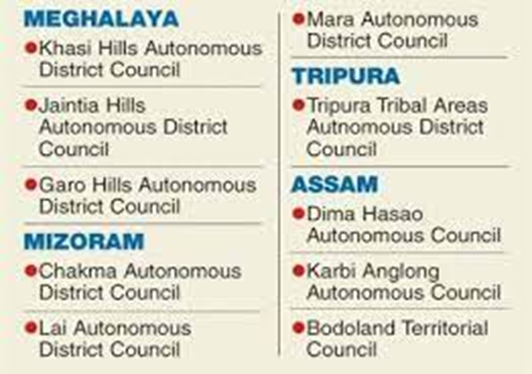- Courses
- GS Full Course 1 Year
- GS Full Course 2 Year
- GS Full Course 3 Year
- GS Full Course Till Selection
- Answer Alpha: Mains 2025 Mentorship
- MEP (Mains Enrichment Programme) Data, Facts
- Essay Target – 150+ Marks
- Online Program
- GS Recorded Course
- Polity
- Geography
- Economy
- Ancient, Medieval and Art & Culture AMAC
- Modern India, Post Independence & World History
- Environment
- Governance
- Science & Technology
- International Relations and Internal Security
- Disaster Management
- Ethics
- NCERT Current Affairs
- Indian Society and Social Issue
- NCERT- Science and Technology
- NCERT - Geography
- NCERT - Ancient History
- NCERT- World History
- NCERT Modern History
- CSAT
- 5 LAYERED ARJUNA Mentorship
- Public Administration Optional
- ABOUT US
- OUR TOPPERS
- TEST SERIES
- FREE STUDY MATERIAL
- VIDEOS
- CONTACT US
Dima Hasao Peace Pact: Assam
Dima Hasao Peace Pact: Assam

Latest Context
Recently, the Assam government and the Union Government signed a peace agreement with Dimasa National Liberation Army (DNLA).
- On the appeal of the Chief Minister in September, 2021, the DNLA declared a unilateral ceasefire for a period of six months. Since then, the ceasefire has been continuously extended.
Main Features of this Peace Agreement
- Abide by the Indian Constitution: The Memorandum of Understanding (MoU) has been signed that makes the DNLA lay down its arms and abide by the Constitution of India.
- To disband its organization: It will disband its armed organization and vacate all camps occupied by DNLA cadres and join the mainstream. Accordingly, it’s all 179 DNLA cadres will surrender their arms and ammunition.
- Development of Dimasa tribal areas: The central and state governments each will offer Rs 500 crore for the development of the Dimasa tribal areas.
- Dimasa Welfare Council: Government of Assam will set up Dimasa Welfare Council to protect, preserve and promote a social, cultural, and linguistic identity to meet political, economic, and educational aspirations. In addition, it will also secure speedy and focused holistic development of the Dimasa people residing outside the jurisdiction of the North Cachar Hills Autonomous Council (NCHAC). Dimasa Tribal Region is run by NCHAC.
- Demand for inclusion: To examine the demand for the inclusion of additional villages contiguous to the NCHAC with the Council, the MoU also provides a provision for the appointment of a commission under the Sixth Schedule (Paragraph 14) of the Constitution of India. The Sixth Schedule of the Indian constitution under Article 244 has special provisions for the formation of autonomous administrative divisions namely Autonomous District Councils (ADCs) that have some legislative, judicial, and administrative autonomy within a state.
Dimasa National Liberation Army (DNLA)

-
Insurgent Group: DNLA is an insurgent group that operates in Dima Hasao and Karbi Anglong districts of Assam.
-
Foundation: It was established in April 2019. The objective of DNLA was to seek a sovereign territory for the Dimasa tribals and it launched an armed insurgency to achieve its goal.
-
Objective: The motto of this group is to “develop a sense of brotherhood among the Dimasas coupled with rebuilding the trust and faith among the Dimasa society for regaining the Dimasa Kingdom”.
-
Financial Resources: The financial resources of this group are extortion and taxation. “It draws its sustenance and support from the NSCN(IM) of Nagaland.
About Dimasas
-
Area of their residence: Dimasa-Kacharis or “The Dimasas” are the earliest known rulers and settlers of Assam. Now they live in Dima Hasao, Karbi Anglong, Cachar, Hojai and Nagaon districts of central and southern Assam and in parts of Nagaland.
-
Identity: According to some historians, they are “aborigines” or the “earliest known inhabitants of the Brahmaputra Valley”.
-
Descendance: It was believed that the Dimasa kings were the descendants of the rulers of the ancient Kamarupa kingdom who ruled large parts of Assam and the south bank of the Brahmaputra between the 13th and 16th centuries prior to Ahom rule.
-
Capital: The earliest capital of “The Dimasas” was Dimapur (now in Nagaland) and later it was shifted to Maibang in North Cachar Hills.
-
They were very powerful and brought almost all southern belt of Brahmaputra under their subjugation in the 16th century.
Protection to Dimasas under Indian Constitution
-
Both districts Dima Hasao and Karbi Anglong enjoy special status under the Sixth Schedule of the Constitution of India.
-
They are under the control of the North Cachar Hills Autonomous Council (NCHAC) and the Karbi Anglong Autonomous Council (KAAC) respectively.
-
It is a powerful body and almost all the departments of government are under its control except the police and Law and Order which is under Assam Government.
History of Militancy in Dima Hasao Region
Militancy
-
The hill districts of Assam, Karbi Anglong, and Dima Hasao have had a long history of insurgency by Karbi and Dimasa groups which reached its zenith in the mid-1990s. Its core demand was statehood.
-
In Dima Hasao, the demand for statehood began in the 1960s in addition to the other tribal sections of undivided Assam.
-
While new states such as Meghalaya were carved out but the regions of Karbi Anglong and North Cachar remained with Assam on a promise of more power by the government. It also comprises the implementation of Article 244 (A) which allows for an ‘autonomous state’ within Assam in some tribal areas. This was never implemented.
Dimasa National Security Force
-
The demand for a full-fledged state, ‘Dimaraji’, gathered momentum which led to the formation of the militant Dimasa National Security Force (DNSF) in 1991.
-
Though, it surrendered in 1995 but its commander-in-chief (Jewel Gorlosa) escaped and formed the Dima Halam Daogah (DHD).
-
The DHD began negotiations with the government in 2003 but its commander-in-chief broke and formed the DHD-J (Jewel) with an armed group called Black Widow. These groups were violent by nature and had very popular support. They signed a ceasefire in 2012.
Other Peace Developments in North East India
-
Karbi Anglong Agreement, 2021
-
Bodo Accord, 2020
-
Bru-Reang Agreement, 2020
-
NLFT-Tripura Agreement, 2019




